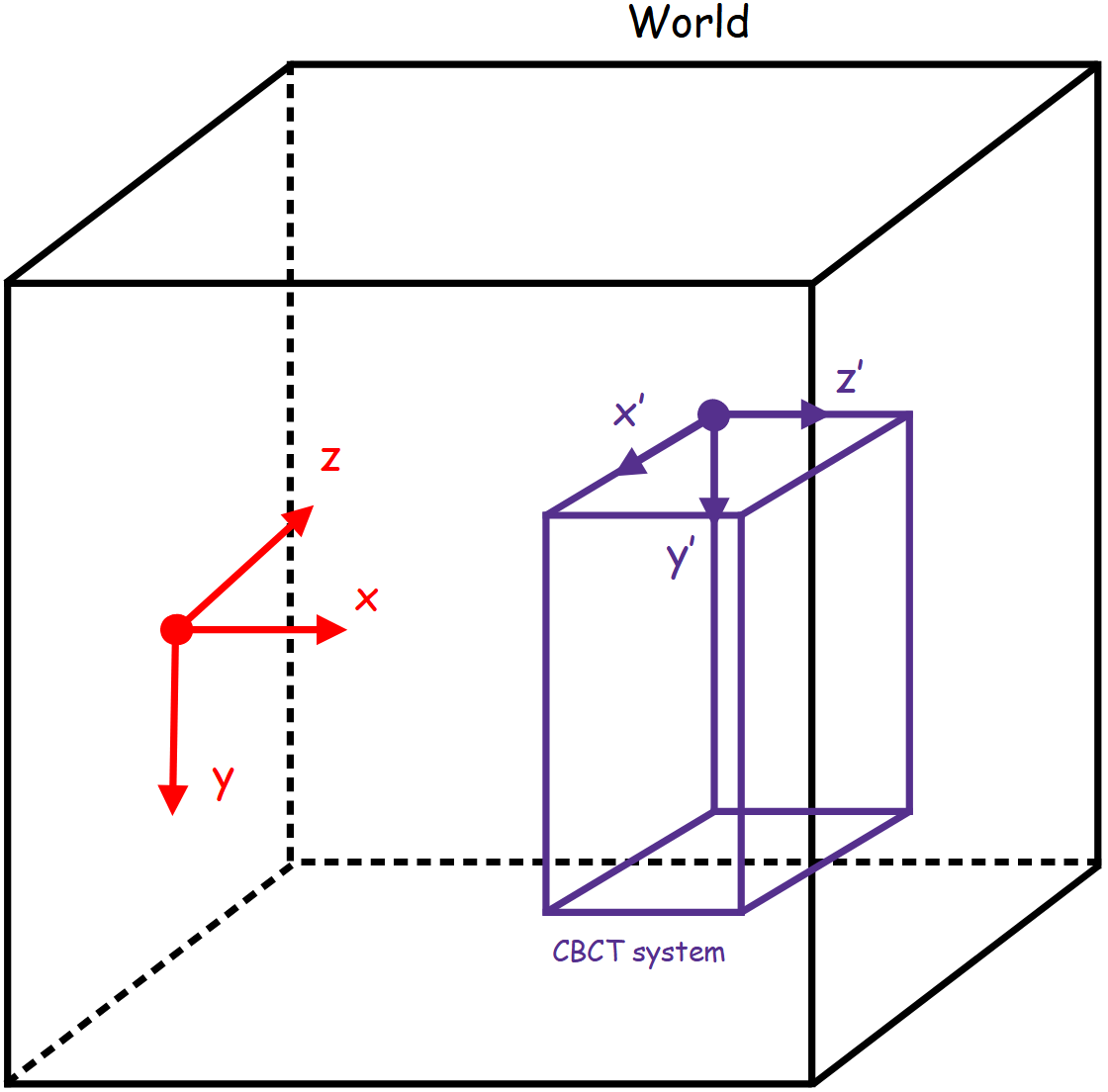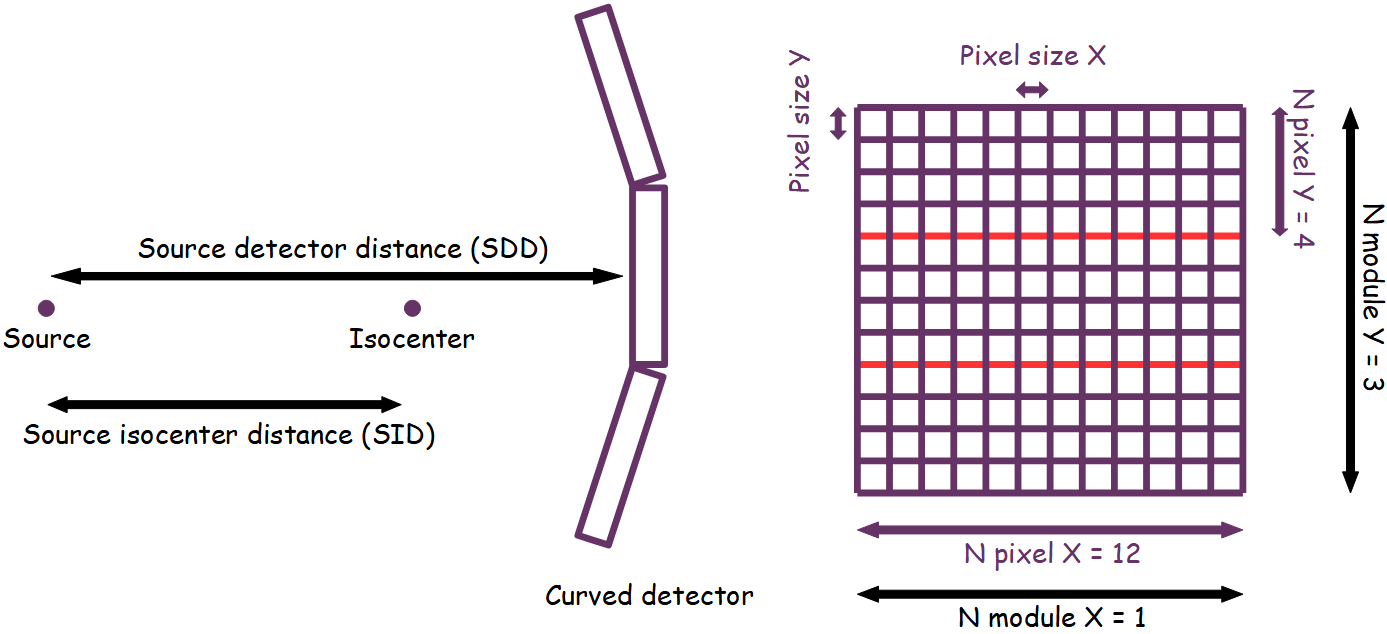Systems¶
In GGEMS, only CT/CBCT system is available for moment. This detector is composed by pixels arranged in modules. The following figure shows the reference axis of CT/CBCT system.
A CT/CBCT system is created using the following line:
cbct_system = GGEMSCTSystem('detector')
Types of CT/CBCT detector are:
flat panel
curved
Flat panel¶
This type of geometry is well adapted for CBCT configuration.
cbct_system.set_ct_type('flat')
Curved¶
This type of geometry is well adapted for CT configuration.
cbct_system.set_ct_type('curved')
Note
For curved geometry, the angle between modules is automatically computed. The center of rotation is the source position, and there is no gap between modules.
For each type of detector, number of modules, number of detection elements within module and their sizes are set as following:
cbct_system.set_number_of_modules(1, 3)
cbct_system.set_number_of_detection_elements(12, 4, 1)
cbct_system.set_size_of_detection_elements(1.0, 1.0, 1.0, 'mm')
Detector can be composed by one type of material:
cbct_system.set_material('GOS')
And a threshold can be applyied specifically to the detector:
cbct_system.set_threshold(10.0, 'keV')
Source isocenter distance (SID) and source detector distance (SDD) is set with the following commands:
cbct_system.set_source_detector_distance(1085.6, 'mm')
cbct_system.set_source_isocenter_distance(595.0, 'mm')
The CT/CBCT system can be rotated around world axis as following:
cbct_system.set_rotation(0.0, 0.0, 0.0, 'deg')
Final projection is saved in a MHD file and scatter registration can be activated:
cbct_system.save('projection')
cbct_system.store_scatter(True)


